Losing a limb is a life-changing experience, but the right prosthetic can help restore mobility, confidence, and independence. Whether you have undergone a below-knee (transtibial) or above-knee (transfemoral) amputation, choosing the right prosthetic limb is crucial for comfort and functionality. Each type has its own advantages, challenges, and unique rehabilitation process.
Understanding the differences between transtibial and transfemoral prosthetics will help you make an informed decision. Factors such as energy efficiency, mobility, adaptability, and long-term comfort all play a role in determining which prosthetic is best suited for your needs.
With modern advancements in prosthetic technology, both transtibial and transfemoral users can achieve high levels of mobility. However, the journey to regaining independence depends on rehabilitation, prosthetic fit, and the right support system.
Understanding Transtibial Prosthetics
A transtibial prosthetic is designed for individuals who have lost their lower leg but still retain their natural knee joint. This type of prosthetic replaces the missing portion of the limb from below the knee, allowing for a more natural walking motion.
Advantages of Transtibial Prosthetics
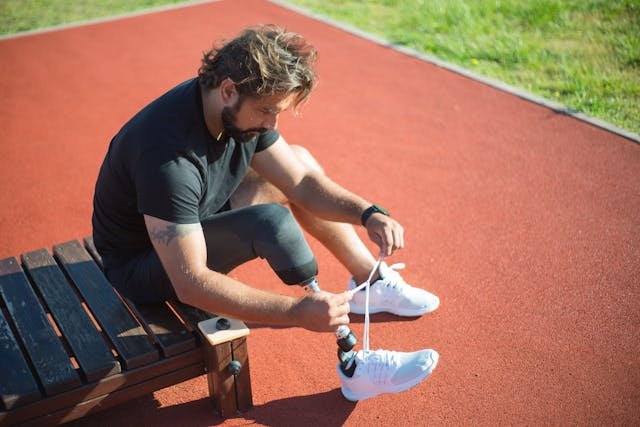
One of the biggest benefits of a transtibial prosthetic is ease of movement. Since the knee joint remains intact, users can maintain better balance and coordination. Walking feels more natural, and the transition to using a prosthetic limb is often smoother compared to an above-knee prosthetic. With proper training, users can quickly adapt to their new limb and regain mobility for everyday activities.
Energy efficiency is another major advantage. Walking with a transtibial prosthetic requires significantly less effort than walking with a transfemoral prosthetic. The knee plays a crucial role in absorbing shock and controlling movement, allowing users to walk for longer periods without excessive fatigue. This makes transtibial prosthetics an excellent choice for individuals who want to stay active and independent.
Comfort is also a key factor. Since the residual limb has more surface area, the socket of a transtibial prosthetic can distribute pressure more evenly. A well-fitted socket minimizes discomfort and reduces the risk of skin irritation. Many users find that, with proper adjustments, their prosthetic becomes a natural part of their body, allowing them to carry out daily tasks with ease.
Challenges of Transtibial Prosthetics
Despite their advantages, transtibial prosthetics come with certain challenges. One of the most common issues is ensuring a proper socket fit. A poorly fitted socket can lead to discomfort, pressure sores, and difficulty walking. Regular adjustments and proper prosthetic care are essential to maintaining comfort and functionality.
Strength and stability in the residual limb are crucial for successful use of a transtibial prosthetic. Without proper rehabilitation, muscle weakness can develop, leading to imbalances and difficulty walking. Physical therapy and strengthening exercises help users maintain control and prevent complications.
Adapting to different terrains can also be a challenge. While transtibial users have greater mobility, they still need to practice walking on uneven surfaces, stairs, and slopes. Gait training and rehabilitation programs help users develop confidence and stability in various environments.
Understanding Transfemoral Prosthetics
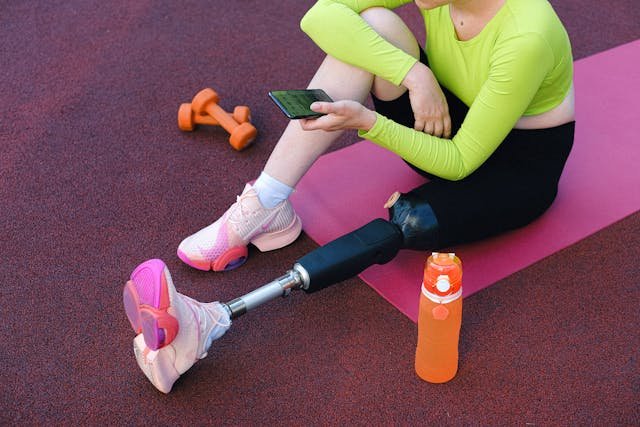
A transfemoral prosthetic is designed for individuals who have undergone an above-knee amputation. Since the knee joint is missing, the prosthetic must include an artificial knee to replicate natural movement. Walking with a transfemoral prosthetic requires more adaptation and energy compared to a transtibial prosthetic.
Advantages of Transfemoral Prosthetics
Modern transfemoral prosthetics have advanced significantly, offering users increased mobility and independence. One of the biggest benefits is the ability to regain a full range of motion with advanced prosthetic knee joints. Many prosthetic knees are designed to mimic natural movement, allowing users to walk, climb stairs, and even run.
Prosthetic technology has made significant strides in enhancing balance and stability for transfemoral users. Microprocessor-controlled knees adjust in real-time to walking speed and terrain, making movement more fluid and reducing the risk of falls. This innovation has greatly improved the quality of life for many above-knee amputees.
Another major advantage is the ability to lead an active lifestyle. With proper rehabilitation and training, transfemoral users can regain independence and participate in physical activities such as cycling, swimming, and sports. Many athletes and active individuals have successfully adapted to transfemoral prosthetics, proving that limitations can be overcome with determination and the right support.
Challenges of Transfemoral Prosthetics
Walking with a transfemoral prosthetic requires more energy and effort than with a transtibial prosthetic. Since the natural knee joint is missing, users must learn to control an artificial knee. This involves a longer rehabilitation process and greater focus on balance and weight distribution. Initially, movement may feel unnatural, but with consistent practice, users can achieve a smooth and stable gait.
Stability is another challenge. Transfemoral users must rely entirely on their prosthetic knee for support, making it more difficult to walk on uneven surfaces or slopes. Learning to shift weight correctly is crucial for maintaining balance. Physical therapy plays a vital role in helping users adjust to these changes and develop the necessary muscle strength.
Socket fit is also a critical factor. The residual limb in transfemoral amputees is shorter, making weight distribution more challenging. A well-designed socket is essential to prevent discomfort, pressure sores, and skin irritation. Regular adjustments and check-ups with a prosthetist ensure a secure and comfortable fit.
Comfort and Fit: What Matters Most?
Socket Fit and Suspension
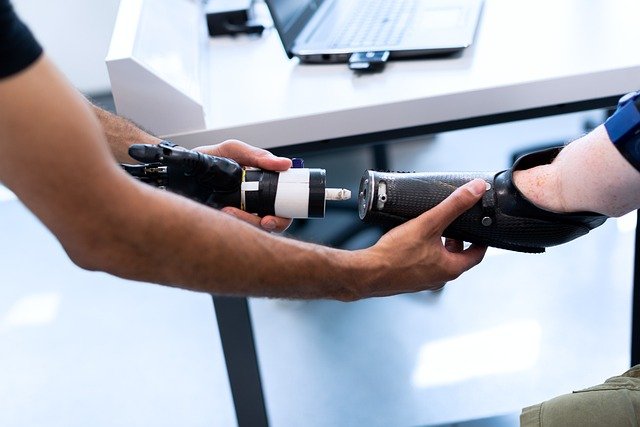
The prosthetic socket is one of the most important components for both transtibial and transfemoral prosthetic users. A well-fitted socket ensures comfort, stability, and proper weight distribution. Transtibial sockets typically offer better comfort due to the larger surface area of the residual limb, allowing for more even pressure distribution.
Transfemoral sockets require additional suspension systems to keep the prosthetic in place. Some designs use vacuum suspension or gel liners to enhance comfort and reduce friction. Regardless of the type, a properly fitted socket is essential for long-term prosthetic use and overall mobility.
Energy Efficiency and Movement
Energy expenditure varies significantly between transtibial and transfemoral prosthetics. Since transtibial users retain their natural knee, they require less effort to walk, making movement more efficient. Transfemoral users must compensate for the loss of the knee joint, leading to increased energy consumption. This makes proper gait training and muscle strengthening essential for transfemoral users.
Long-Term Adaptability
Both types of prosthetics require periodic adjustments and maintenance. As the residual limb changes in shape over time, socket modifications are necessary to maintain a secure and comfortable fit. Regular visits to a prosthetist help ensure optimal function and prevent complications. The adaptability of each prosthetic type depends on lifestyle, rehabilitation, and commitment to physical therapy.
Rehabilitation and Training: The Key to Success
Importance of Physical Therapy
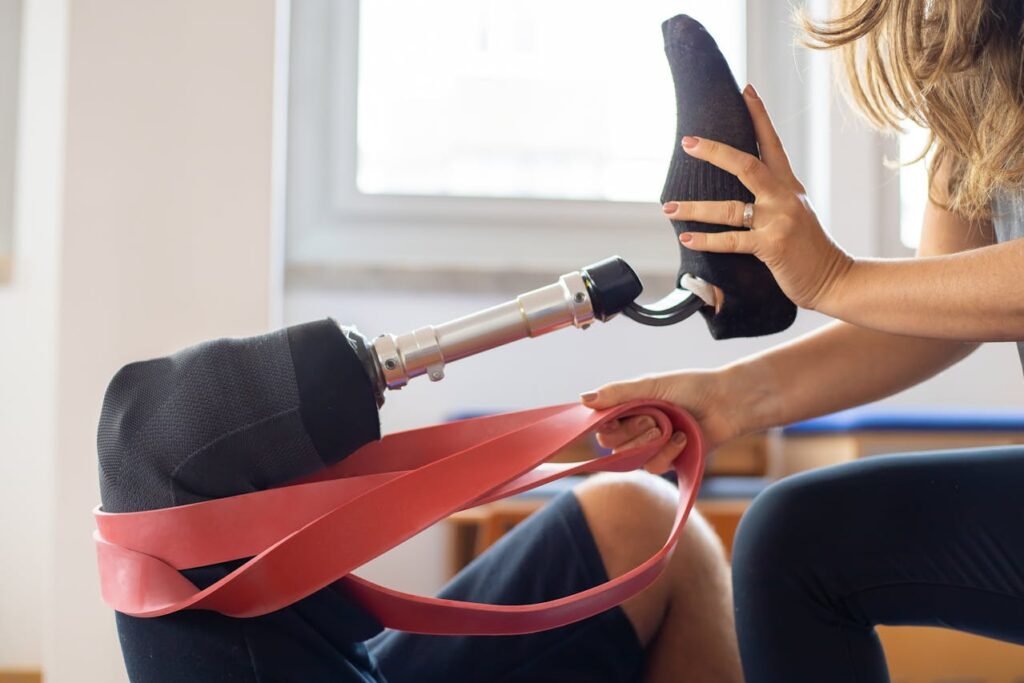
Rehabilitation is essential for both transtibial and transfemoral users. Physical therapy helps improve strength, balance, and coordination, making the transition to using a prosthetic smoother. A structured rehabilitation program is crucial for regaining mobility and independence.
Learning to Walk Again
Transtibial users typically regain mobility faster due to the preserved knee joint. Walking feels more natural, and adjustments to gait are minimal. Transfemoral users must focus on weight distribution and knee control, requiring more intensive training. With persistence and proper guidance, both types of users can achieve excellent mobility.
The Role of Support Systems
Support from family, prosthetists, and rehabilitation specialists makes a significant difference in prosthetic adaptation. Having a strong support system encourages users to stay motivated and committed to their rehabilitation journey. Many users also benefit from peer groups and organizations that provide guidance and shared experiences.
The Role of Prosthetic Technology in Mobility
Prosthetic technology has significantly evolved over the years, allowing users to experience improved comfort, stability, and adaptability. Whether you are considering a transtibial or transfemoral prosthetic, advancements in materials and design have made it easier for users to regain their mobility with minimal discomfort.
Innovations in Prosthetic Knees and Feet
For transfemoral users, the development of microprocessor-controlled knees has been a game-changer. These advanced knee joints use sensors to detect movement patterns and adjust resistance in real time. This means users can walk more naturally, navigate uneven terrain, and even descend stairs with greater ease. Some models also feature stumble recovery technology, which helps prevent falls by adjusting knee resistance when unexpected movements occur.
Transtibial prosthetic users benefit from advancements in prosthetic feet. Many modern feet now include energy-returning components, allowing for a more dynamic walking experience. Some designs mimic the natural movement of an ankle, helping users maintain better balance while walking on slopes or uneven surfaces. These improvements have made prosthetic limbs more functional, enabling users to engage in everyday activities with confidence.
The Impact of Lightweight and Durable Materials
The materials used in prosthetics have drastically improved, making them lighter and more durable. Traditional prosthetics were often bulky and uncomfortable, but modern designs incorporate carbon fiber and titanium, which provide strength without excessive weight. Lighter prosthetics reduce strain on the residual limb, allowing users to wear them for longer periods without discomfort.
For transtibial users, lightweight materials make movement smoother and more natural. Reduced weight means less effort is required to lift and move the prosthetic, allowing for a more fluid gait. For transfemoral users, advanced materials contribute to better weight distribution and improved balance, making walking easier and less tiring.
Customization and 3D-Printed Prosthetics
Customization plays a huge role in the comfort and functionality of a prosthetic limb. No two residual limbs are the same, which is why a custom-fitted socket is essential for a secure and comfortable fit. Today, 3D printing technology has made it possible to create highly customized prosthetics that match the exact shape and size of an individual’s residual limb.
3D-printed prosthetics offer several benefits, including faster production times, cost-effectiveness, and a more precise fit. This technology has made prosthetics more accessible and affordable for many individuals. A well-fitted prosthetic reduces friction, minimizes pressure sores, and enhances overall mobility, ensuring that users can carry out their daily activities comfortably.
Psychological and Emotional Adaptation to Prosthetics
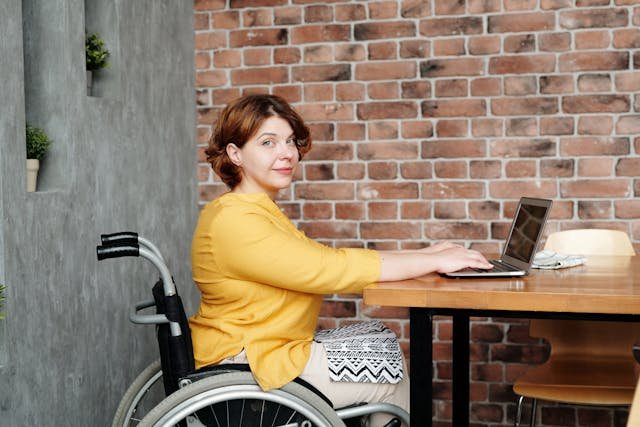
Adjusting to a prosthetic limb is not only a physical journey but also an emotional one. Many individuals experience a range of emotions, from frustration and sadness to determination and hope. Having a strong support system and access to resources can make this transition smoother.
Overcoming Initial Challenges
The early days of using a prosthetic can be challenging. Many users feel discomfort, struggle with balance, or experience self-consciousness about their new limb. It is important to acknowledge these emotions and work through them with the support of rehabilitation specialists, family, and peers who have gone through similar experiences.
Rehabilitation programs not only focus on physical strength but also help individuals build confidence in their ability to move independently. Setting small goals and celebrating progress can motivate users to keep pushing forward. Over time, as movement becomes more natural, confidence grows, and daily tasks become easier to perform.
The Importance of Peer Support and Community
Being part of a supportive community can significantly impact the emotional well-being of prosthetic users. Many organizations and online forums provide platforms where individuals can share their experiences, seek advice, and offer encouragement to others going through similar journeys.
Engaging with peer support groups helps users feel less isolated and more empowered. Learning from others who have successfully adapted to a prosthetic can provide motivation and practical tips for overcoming challenges. Many people find inspiration in seeing what others have accomplished, reinforcing the belief that they too can regain independence and lead fulfilling lives.
Redefining Independence and Self-Image
Adjusting to life with a prosthetic involves redefining independence and self-image. Many users find that once they become comfortable with their prosthetic, they can return to the activities they love, whether it’s sports, travel, or hobbies. This sense of normalcy and freedom is essential for maintaining a positive mindset.
Modern prosthetic designs focus not only on function but also on aesthetics. Many users take pride in their prosthetic limb, seeing it as a part of their identity rather than something to hide. Personalized designs, such as prosthetics with customized covers or artistic elements, allow users to express their individuality and confidence.
Sports and Active Lifestyles with Prosthetics
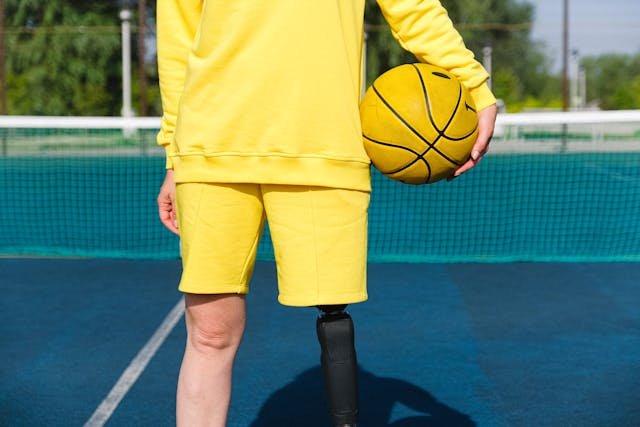
One of the most exciting advancements in prosthetic technology is the ability for users to engage in sports and active lifestyles. Whether you have a transtibial or transfemoral prosthetic, there are specialized designs available that enhance movement, agility, and endurance.
Running Blades and High-Performance Prosthetics
For individuals who enjoy running or high-impact activities, running blades have become a popular option. These prosthetics are made from carbon fiber and provide energy return with each step, allowing users to run with greater efficiency. Running blades are commonly used by athletes in competitive sports, but they are also available for recreational users who want to stay active.
Transtibial users often find it easier to adapt to running prosthetics due to the preserved knee joint. The transition to high-performance prosthetics is smoother, and many users can achieve near-natural running mechanics. For transfemoral users, running requires additional training to master the movement of an artificial knee, but with the right prosthetic design, running is entirely possible.
Water-Resistant and Adaptive Prosthetics
Swimming, hiking, and outdoor adventures are no longer off-limits for prosthetic users. Many prosthetics are now designed to be water-resistant, allowing users to engage in activities like swimming and water sports without worrying about damage. Adaptive prosthetics for hiking provide better traction and flexibility, making it easier to navigate rough terrains.
For individuals who enjoy cycling, specialized prosthetic knees with locking mechanisms allow for efficient pedaling, ensuring smooth and controlled movement. Advancements in adaptive prosthetics have made it possible for users to participate in almost any activity they choose, reinforcing the idea that limb loss does not have to limit lifestyle choices.
Training and Rehabilitation for an Active Lifestyle
Adapting to sports prosthetics requires specialized training and rehabilitation. Physical therapists work with users to develop proper techniques, improve endurance, and ensure that their prosthetic fits comfortably during high-impact activities. Strength training, balance exercises, and flexibility routines help users maximize their performance while reducing the risk of injury.
Many organizations and prosthetic manufacturers, including Robobionics, offer training programs to help users transition into active lifestyles. Whether it’s learning to run with a prosthetic blade or mastering a new sport, proper guidance is essential for long-term success.
Choosing Robobionics for Your Prosthetic Needs
At Robobionics, we believe that everyone deserves a high-quality, comfortable, and functional prosthetic that fits their lifestyle. Whether you require a transtibial or transfemoral prosthetic, our team of experts provides personalized solutions to help you regain independence and confidence.
We offer advanced prosthetic designs that prioritize comfort, durability, and adaptability. Our team works closely with each user to ensure the perfect fit, proper training, and ongoing support. We also provide innovative rehabilitation programs to help users transition smoothly into their new prosthetic limb.
If you are looking for a prosthetic that enhances mobility, supports an active lifestyle, and fits seamlessly into your daily routine, Robobionics is here to help.
Take the next step toward independence—book a free demo with Robobionics today and experience the difference that a high-quality prosthetic can make in your life!



